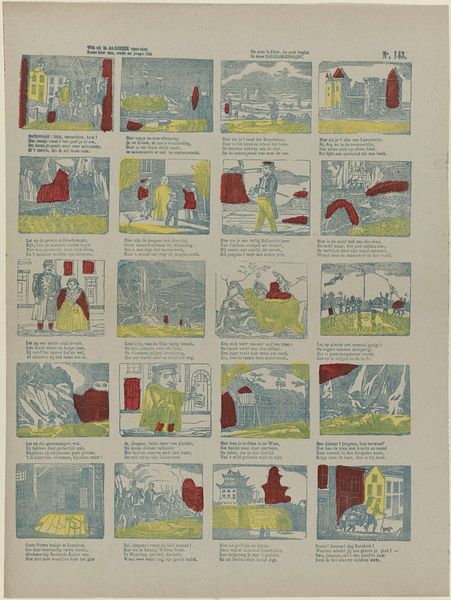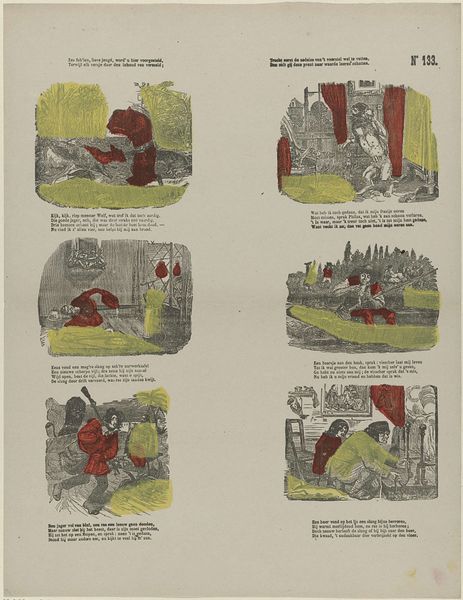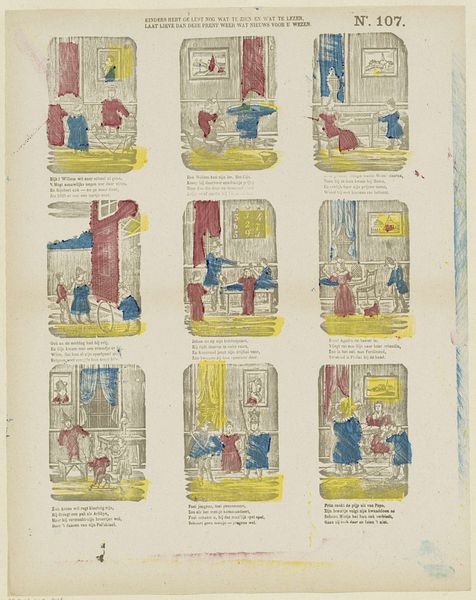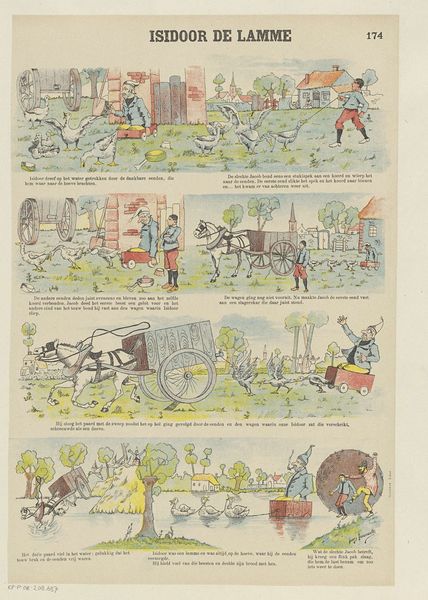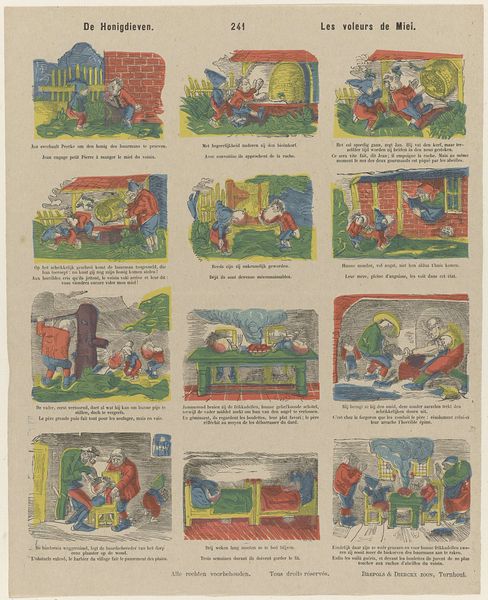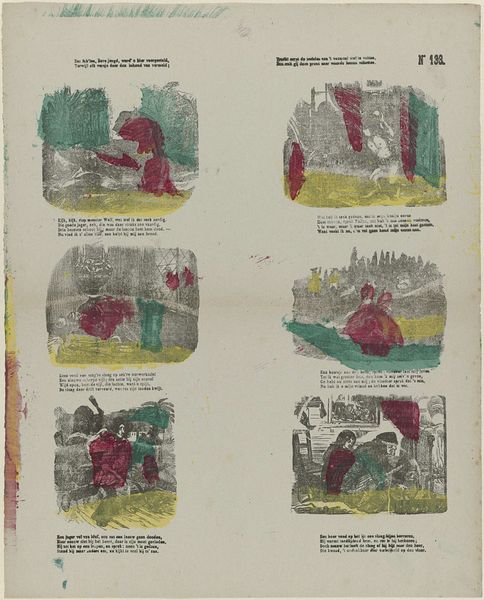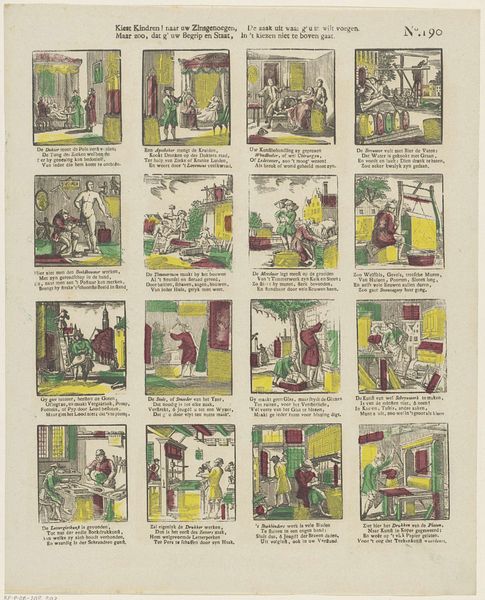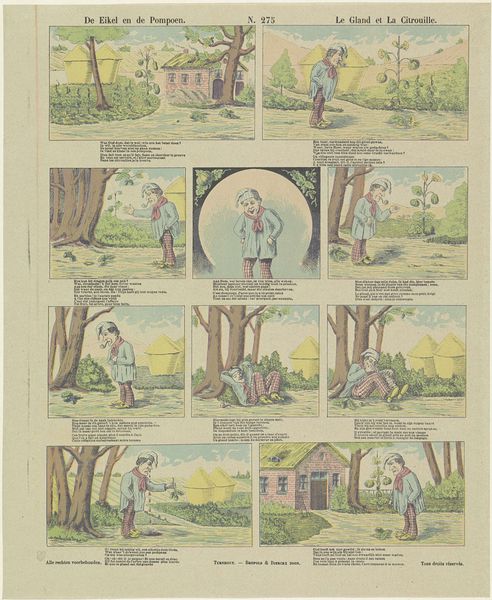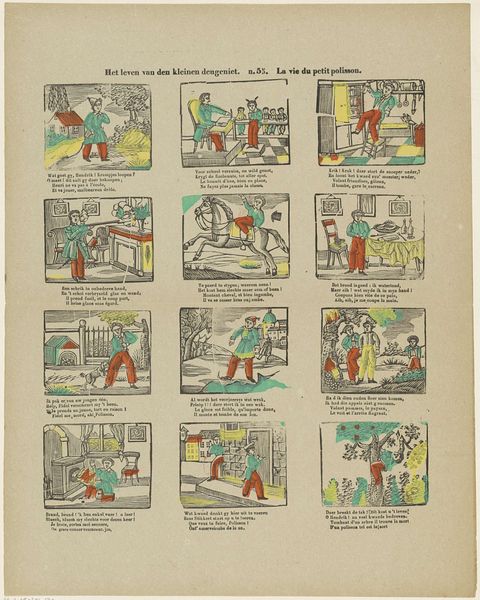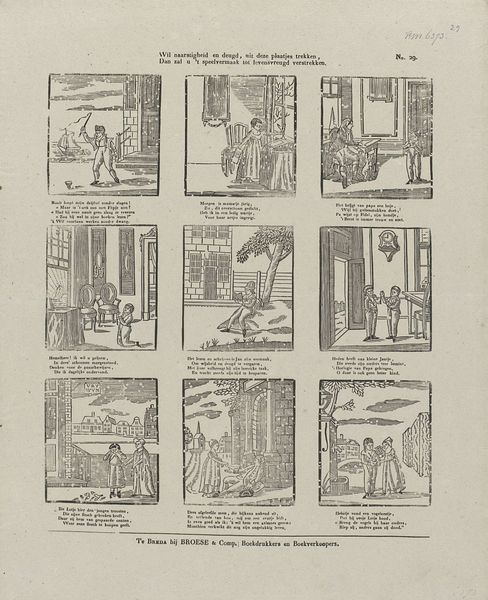
graphic-art, print, woodcut
#
graphic-art
#
narrative-art
# print
#
linocut print
#
woodcut
Dimensions: height 395 mm, width 316 mm
Copyright: Rijks Museum: Open Domain
Curator: This intriguing print, titled "De natuur," dates from 1827 to 1894, and is attributed to M. Hemeleers-van Houter. It resides here at the Rijksmuseum. It's an unusual combination of graphic art, utilizing woodcut or perhaps linocut print techniques to create these six vignettes. What are your initial thoughts? Editor: It strikes me as quite whimsical. The limited palette gives it a dreamlike, almost otherworldly feel. The division into these six little scenes...it's like a page from a children's book, a lesson in observation. I’m immediately drawn to the textures created by the printmaking process itself; the graininess adds so much character. Curator: Indeed. If we dissect each scene formally, we can discern certain recurring motifs – note the stylized figures, each seemingly engaged with their environment in distinct ways. Also, observe the bold use of color, predominantly the reds, creating focal points within the larger compositional structure. Semiotically, how does this interplay inform the overall message? Editor: From a materialist perspective, I find myself wondering about the creation of these prints. Given the likely date range, consider the social conditions impacting their production and dissemination. Was it a labor-intensive process? Were these distributed widely or intended for an elite audience? The answers inevitably shift our interpretation. Also, the use of limited colours hints at available dyes and pigmentation techniques of the period – that practical materiality directly shapes aesthetics! Curator: A crucial point. And consider how each tiny tableau plays with figure-ground relationships, alternating densities and distributions of printed forms... These juxtapositions invite endless comparative readings within this framed world. It appears meticulously considered; do you agree? Editor: Yes, absolutely. Seeing that attention makes me think about skill. I want to know more about the specific wood-cutting implements M. Hemeleers-van Houter employed. Were they custom made? Who trained them? And where exactly did these materials originate before they reached this printshop and our contemporary museum? Curator: Contemplating this work truly shows a dialectic, how form informs function as much as function shapes form! Editor: Precisely. Each glance urges me to ask: who had their hands upon this page?
Comments
No comments
Be the first to comment and join the conversation on the ultimate creative platform.

